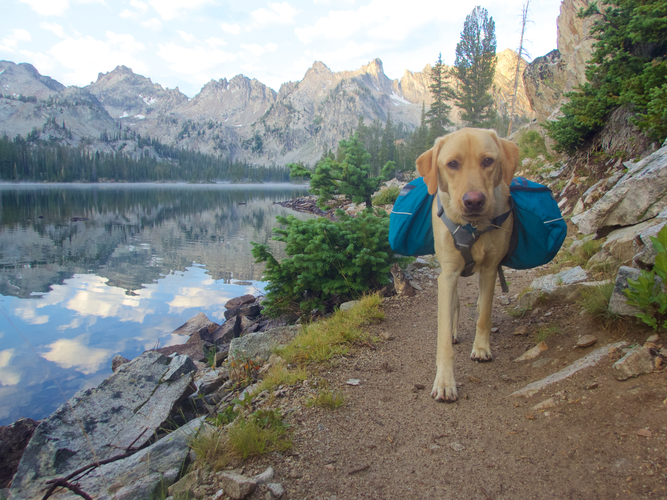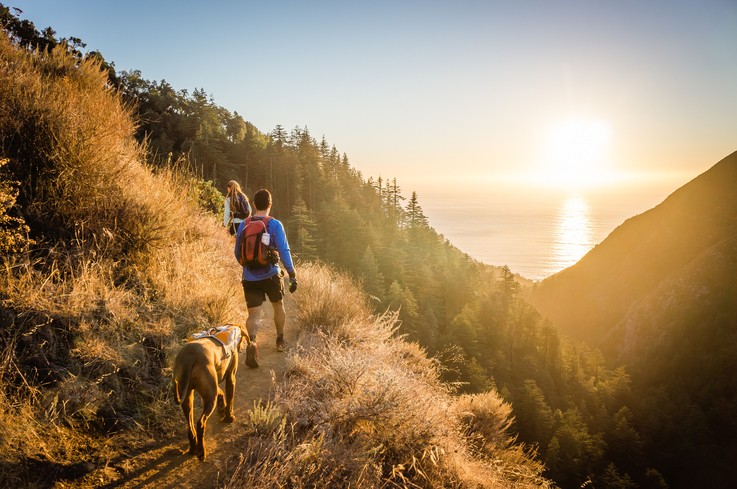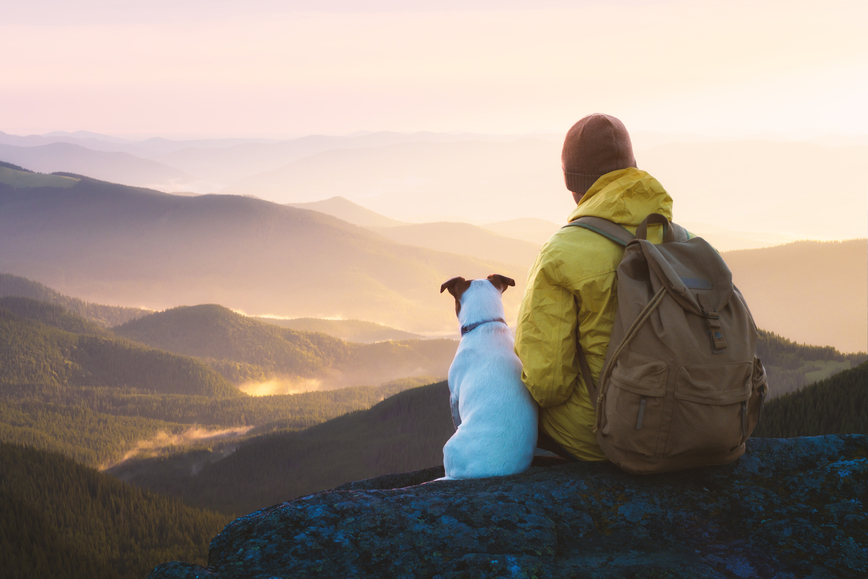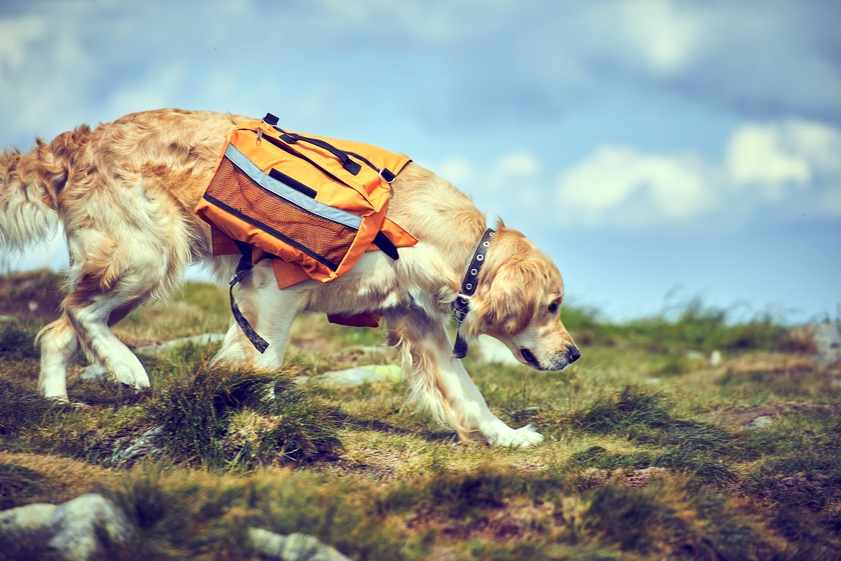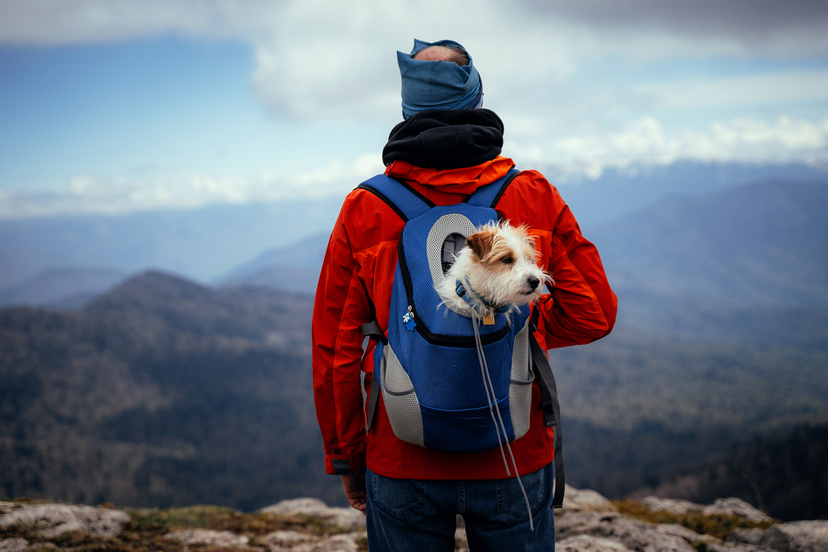There aren’t many activities dog lovers can do with their pets, especially when it comes to international traveling. However, have you ever considered backpacking with dogs? It is an excellent opportunity for adventure with your four-legged companion.
Planning a backpacking trip can be overwhelming, especially when you have to consider the needs of your four-legged fellow in addition to your own. The prospects of safety with your pet may also be overwhelming. For this reason, we have prepared a useful list for backpacking with dogs.
This information will come in handy, whether you are a seasoned backpacker or a first-timer. If you are planning to have your furry companion on your next backpacking adventure, this guide will help you ensure his safety. Besides the tips in this guide, you would also benefit from getting travel insurance before your backpacking trip with your dog.
Index
Is it safe to take your dog backpacking?
Backpacking is primarily an outdoor activity. Therefore, you have a lot of freedom when it comes to what you can do and who you can bring along. Backpacking with dogs is generally safe. However, it is worth mentioning that dogs are also susceptible to the same danger humans are. The difference between dogs and humans is that dogs don’t always recognize the dangers that can harm them. Therefore, when backpacking with dogs, you should be vigilant about the following:
- Overdoing it: the last thing you want to do is overexert your dog during your adventures. So, you can avoid overdoing it by checking your dog’s breathing pattern and heart rate frequently. Remember that your furry friend will not be able to tell you when they are tired. So, it is up to you to look out for signs and take breaks.
- Wildlife: make sure that your dog is on a leash when the visibility is low for you, so you can protect them against wildlife. Also, check for ticks after the hike.
- Wild plants: besides wild animals, you also need to protect your dog from wild plants. For instance, ensure that they do not chew on wild plants or rub against poison or tainted plants.
- Heat stroke: this is a serious concern for dogs. So, to prevent heat stroke, ensure to rest and take water breaks often. Also, make a point of stepping away from the sun when possible.
- Water safety: keep your dog away from water if they can’t swim. Additionally, you can pack a life vest for yourself and your dog.
- Waterborne pathogens: be cautious about what your dog drinks. Do not allow your dog to drink from puddles. Ensure to carry water for yourself and your dog.
Tips for backpacking with your dog
Dogs are among the best backpacking companions. However, before you embark on a backpacking trip with your furry friend, you must ensure their safety. Additionally, backpacking with a pet requires more planning. Below are some effective tips for backpacking with your dog:
- Pre-hike readiness: just because your dog is active and can withstand the daily walks does not mean that they are ready for an adventure like backpacking. So, the first thing you must do before taking your dog on this adventure is to visit the vet. You also need to take your dog through obedience training. The last thing you want is to have your dog running wild and giving you a hard time during your trip. Something else you can do for pre-hike readiness is trail etiquette training. You can do this by taking your dog on a local trail hiking so you both have an idea of what to expect. Finally, you need to build your dog’s stamina before you go hiking or backpacking.
- Check area regulations: before taking your dog on a backpacking trip, you also have to check area regulations. Ensure that your furry friend is allowed on the trail. Some trails, like national parks with delicate ecosystems, do not allow dogs. Other trails have strict rules. For instance, most national parks only allow dogs if they are leashed and do not enter off-limit areas. Regulations may vary depending on the area. Therefore, if you plan on visiting various locations, you must ensure to check their regulations separately.
- Do dog training walks before the trip: Just like human beings, animals also need to work up to distance and elevation before taking on a significant adventure like a backpacking trip. So, as you prepare for the trip, it would help to also prep your dog by taking him on training walks. During the walks, you must watch out for signs of exhaustion, like breathing difficulty, panting, drooling, and change in behavior. This will prevent you from overdoing it with your four-legged friend.
- Test their obedience: your furry friend may be well-behaved in the backyard, but this does not guarantee obedience in the wild. So, test your dog’s obedience by having them respond to commands in different environments.
- Test gear at home and get the dog familiar with it: using backpacking and camping gear may come easy for you. However, when it comes to dogs, it is not as easy. The gear may seem scary for your four-legged champ. So, it would be wise to expose them to the gear at home so they can familiarize themselves with it. This will make your life easy during the trip.
- Dog-proof your gear: make sure your gear is fit for dog use. Dog-proofing will save you from unnecessary losses and harm. For instance, you can use tent footprints to protect your tent floors from your dog’s claws.
- Protect their paws: some trail surfaces may be dangerous for your dog. For instance, some may be hot, slippery, or too wet. Sharp rocks are also worth looking out for. You can protect your dog’s paws by getting them dog booties. Ensure to familiarize your dog with the dog booties before the trip.
- Put a brightly colored reflective vest and a collar light: This is particularly important if you are backpacking with dogs during hunting season, so it does not get mistaken for wildlife. The reflective gear will also help you keep track of your pup.
- Double-check the weather before you go: ensure to check the weather so you can avoid being out during storms, which can spook off your dog and make it run away. Also, you should not hike with your dog in the rain because the wet trail is a tripping hazard. Too much heat or cold can also harm your put.
- Have a doggy first aid kit: ensure to pack a first-aid kit tailored specifically to dogs. You can get this from your vet. Like humans, dogs are also susceptible to injuries and accidents. So, it would be a good idea to be prepared for anything. Also, make sure you know how to use the dog first aid kit.
- Get them an ID tag and microchip: you need something that you can use to track your dog in case he gets lost. So, ensure the dog has a detailed tag or a microchip.
- Know your dog’s limit: During the pre-hike training, you will discover your dog’s limit. Ensure not to push your furry friend beyond limits for their safety. Keep looking out for signs like excessive panting and increased heart rate. Also, check your dog often to assess their energy level.
- Start slow: do not take your dog from zero to a hundred. Pace yourself and allow your dog to get used to the new environment before going full-out.
- Pack plenty of food and water: ensure to pack enough water and food for yourself and your dog. You can always buy more food and water as you continue with your trip. However, do not introduce your dog to foreign foods because you do not know how they will react to it and you may not be prepared for the reaction.
- Leave no trace: do not leave waste along the trail as you backpack with your dog. Carry waste bags for your dog’s poop and any other waste. You do not have to walk around with them.
- Avoid trail hazards: be extra careful and vigilant when backpacking with a dog. Avoid trails with any potential dangers like slippery surfaces, wilderness areas, poisonous plants, steep ledges, thin ice, water sources, and wildlife that could harm your dog.
- Let them explore their surroundings when you choose a camping spot: Your dog will be on a leash for most of the hiking and walking. So, it would be wise to give them some freedom and let them wander around for a bit when you choose a camping spot. However, ensure that the surroundings are dog safe and that you can keep track of your dog.
Where does your dog sleep when backpacking?
Besides carrying a dog bed or sleeping pads, finding a safe and secure place for your dog to rest should be a key priority during your backpacking trips. For instance, if your dog sleeps in the tent, ensure that it is closed. It is common for dogs to get up earlier than their human companions. So, ensure that if your dog gets up before you, he will not get into trouble.
Some dogs are comfortable sleeping outside while others prefer sleeping indoors. However, even if your dog loves sleeping outside, ensure that they go in the tent with you. This will keep them safe from bugs, and predators, and prevent them from wandering off and getting into trouble. Ensure that your tent is dog-proof so it also cannot cause damage inside.
How do I start backpacking with my dog?
Backpacking with dogs should not scare you. With the tips in this post, you should have an easy time. Below is a guide on how to prepare before you hit the trail:
- Visit the vet: this will help you make sure that your dog is physically ready for the adventure. The vet will also advise you on issues like specific vaccinations and preventative medications that your pup may require. Additionally, your vet will assess your pup’s immune system and ensure he is ready for the trip.
- Brush up your dog on obedience: take your dog through obedience training, even if they are already trained, to ensure you will have a smooth trip.
- Start slow on trail training: begin training your dog at home before embarking on the trip. You can do this by easing your dog into routine hiking and slowly building up until you feel they are ready for the adventure.
- Get familiar with the gear at home: introduce your dog to the backpacking gear before the trip so you do not have a challenge during the trip.
What should the dog backpacking carry?
There are some essentials you should always have. For instance, you need backpacking gear for training your dog before the trip. You can start them off slowly and increase the pack weight gradually.
The standard weight your dog should carry is a maximum of 25% of their body weight. However, factors like age, size, and strength can influence this. You can also check with your vet.
What do I need to backpack with my dog?
You must pack well for the trip. Below are some things you should pack for your backpacking adventure with your dog:
- Poop bags
- Sack or gallon zip lock for containing the poop bags
- Training treats
- Food and water bowls
- Bring an extra meal and water in case you stay out longer than anticipated on day hikes
- Snacks
- Boots or musher’s wax
- Socks or boot liners
- Suitable clothing
- Cooling vest
- Fleece jacket
- Rain jacket
- Reflective vest
- Life jacket
- Foam pad (cut to size)
- Dog sleeping bag or blanket
- Pack towel
- Toy (optional)
You should also be sure to pack appropriately for yourself, here is an ultimate guide for packing for your backpacking trip.
Do not travel without travel insurance
Your health and safety should always be a top priority when embarking on any travel adventure. So, make sure you do not embark on your travels without comprehensive travel insurance.
Heymondo travel insurance offers the protection you need to ensure peace of mind during your Icelandic adventure. In the event that you require medical assistance, we provide a convenient emergency call feature through our Heymondo assistance app, which is available 24/7, worldwide. This allows you to seek immediate medical attention or consultation from a medical team, ensuring you receive the necessary support during your trip. Our travel insurance coverage not only prioritizes your health, with up to $10.000.000 USD in medical coverage. It also extends to safeguarding your luggage against loss or theft.
With Heymondo, you can travel confidently, knowing you have reliable coverage in unforeseen circumstances. Choose Heymondo travel insurance for comprehensive coverage and peace of mind. Don’t leave your adventure to chance!
Featured stories

